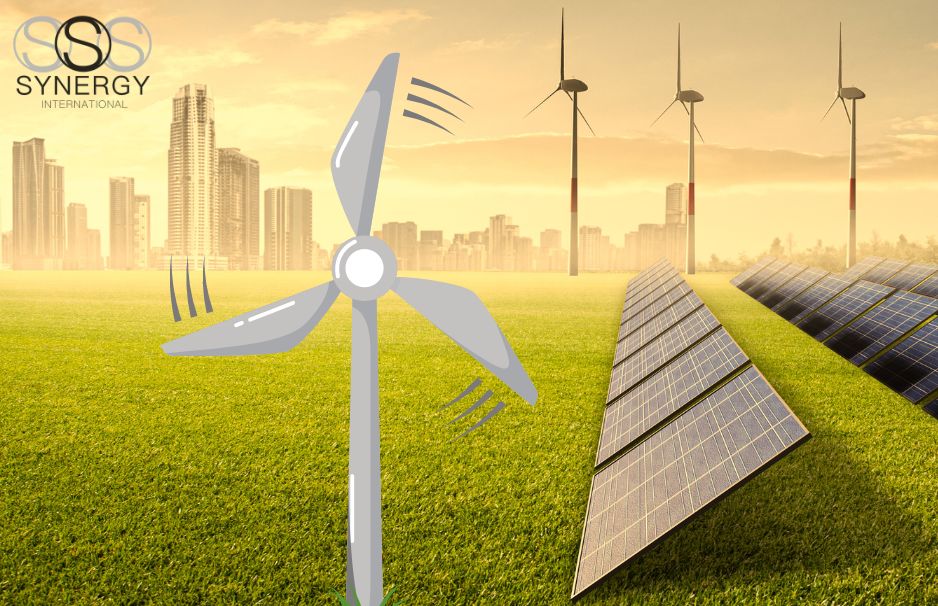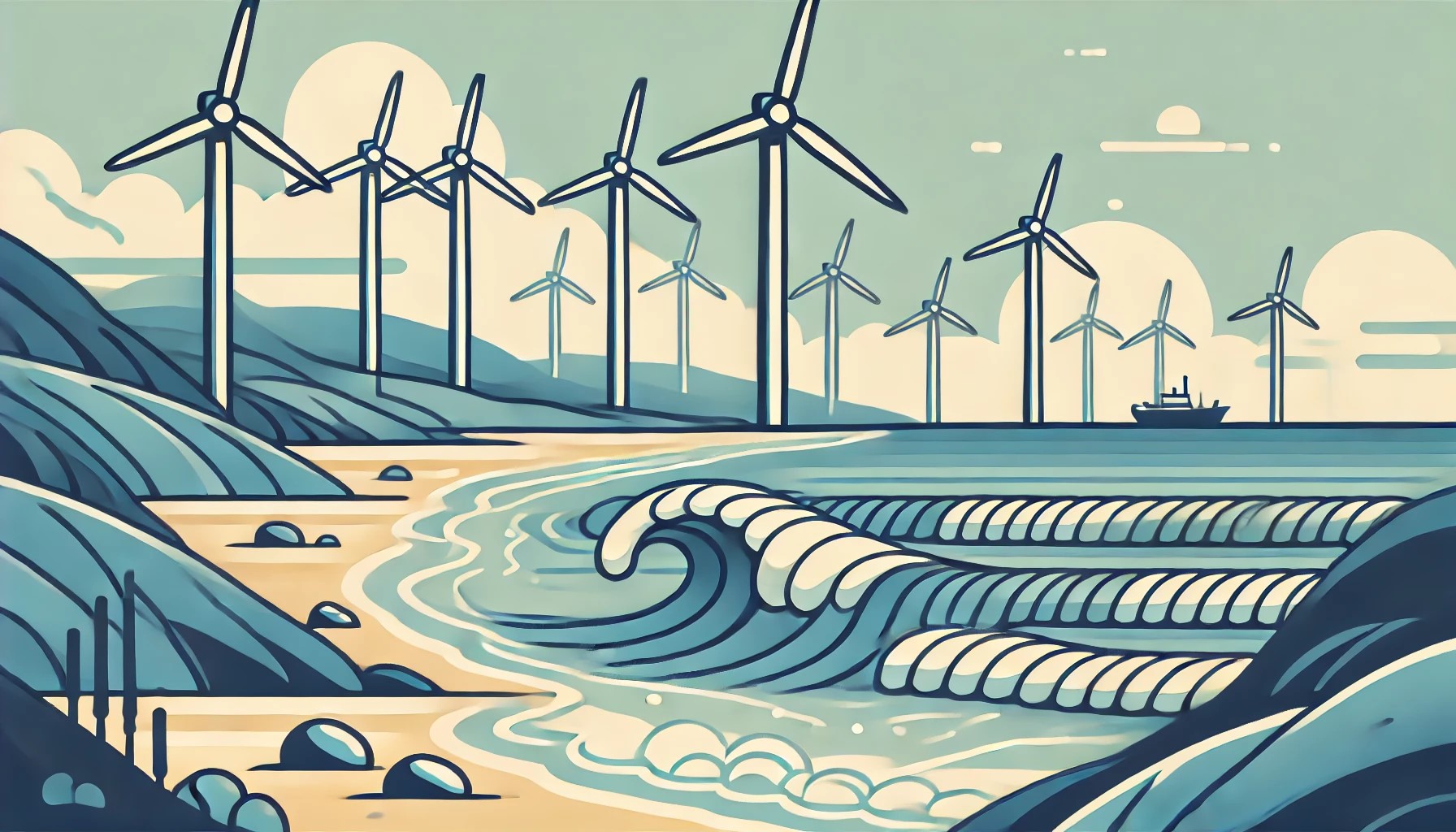Different Types of Renewable Energy

Exploring the Different Types of Renewable Energy
As the global community intensifies efforts to combat climate change and reduce dependence on fossil fuels, green energy has become central to achieving a sustainable future.
Renewable energy sources are sustainable, inexhaustible, and environmentally friendly, offering tremendous potential to transform our energy systems. Below, we explore the most common types of renewable energy, their advantages, challenges, and the investment outlook in each sector, particularly in the context of Final Investment Decision (FID) support expected in 2025.
Green Hydrogen - The Future of Clean Energy
Green Hydrogen, produced by electrolyzing water using renewable energy, is a key player in the decarbonization of industries and transportation.
Advantages
- Versatility: Green hydrogen can be used across various sectors, from energy storage to fuel for transport and industrial processes.
- Zero Emissions: When produced with renewable energy, green hydrogen is a clean energy source, emitting only water vapor.
- Energy Storage: Green hydrogen serves as an excellent storage medium for excess renewable energy.
Challenges
- High Production Costs: Current technology makes green hydrogen more expensive than conventional fuels.
- Infrastructure: Significant investment in infrastructure is required to support widespread adoption.
- Energy Efficiency: The process of producing, storing, and transporting green hydrogen is energy-intensive.
Investment: FID Support in 2025: 9/10
As a cornerstone of the future energy landscape, green hydrogen is poised to receive substantial FID support, driven by its potential to decarbonize hard-to-abate sectors and its role in global energy transition strategies.
At Synergy International, we are deeply invested in advancing Green Hydrogen projects as part of our commitment to a sustainable future. We believe that with the right investment and strategic support, Green Hydrogen will become a transformative force in the global energy transition.
Solar Energy - Harnessing the Power of the Sun

Solar energy remains at the forefront of green energy.
By converting sunlight into electricity through photovoltaic (PV) cells or concentrating solar power (CSP) systems, solar energy has seen widespread adoption, particularly due to falling costs and technological advancements.
Advantages
- Abundance: The sun provides an almost limitless energy source, offering more energy in an hour than the world consumes in a year.
- Scalability: Solar systems can be implemented on both small and large scales, making them versatile.
- Low Operating Costs: Once installed, solar panels require minimal maintenance and produce energy at very low costs.
Challenges
- Intermittency: Solar energy is dependent on sunlight, reducing reliability during cloudy days or at night.
- Land Use: Large-scale solar farms require significant land, which can be challenging in densely populated areas.
- Energy Storage: Effective storage solutions are necessary to manage energy during non-sunny periods.
Investment: FID Support in 2025: 7/10
The solar sector continues to attract significant investment, with a strong likelihood of reaching FID as technology matures and storage solutions advance.
Wind Energy - Capturing the Winds of Change
Wind energy harnesses the power of moving air to generate electricity via wind turbines. Wind farms are strategically located in areas with consistent winds, such as coastal regions and open plains.
Advantages
- Efficiency: Modern turbines convert a large portion of wind energy into electricity.
- Cost-Effective: Wind energy is one of the cheapest electricity sources, particularly in windy regions.
- Minimal Water Use: Unlike fossil fuel plants, wind turbines conserve water, aligning with sustainability goals.
Challenges
- Aesthetic and Noise Concerns: Wind turbines can be visually unappealing and generate noise, leading to local opposition.
- Wildlife Impact: Turbines can harm birds and bats, raising ecological concerns.
- Intermittency: Wind energy is variable, necessitating backup systems or storage solutions.
Investment: FID Support in 2025: 8/10
Wind energy, especially offshore projects, is expected to receive substantial FID support, driven by efficiency improvements and growing environmental benefits.
Hydropower - Flowing with the Current
Hydropower generates electricity by using the flow of water to turn turbines, making it one of the most reliable forms of renewable energy.
Advantages
- Reliability: Hydropower can provide a consistent electricity supply and often serves as a baseload power source.
- Energy Storage: Pumped-storage hydropower enables energy storage for high-demand periods.
- Low Emissions: Hydropower produces minimal greenhouse gases compared to fossil fuels.
Challenges
- Environmental Impact: Dam construction can disrupt ecosystems and affect water quality.
- Geographical Limitations: Hydropower requires suitable water resources, limiting its deployment.
- High Initial Costs: Building dams and related infrastructure requires significant investment.
Investment: FID Support in 2025: 6/10
While established, hydropower may see moderate FID support as environmental concerns and geographical limitations persist.
Biomass Energy - Tapping into Biological Resources
Biomass energy, derived from organic materials like wood, agricultural residues, and waste, is versatile, producing electricity, heat, or biofuels.
Advantages
- Carbon Neutral: Biomass can be carbon-neutral if sourced sustainably, balancing CO2 emissions with CO2 absorption during growth.
- Waste Reduction: Utilizing waste for energy reduces landfill use and manages agricultural and industrial waste.
- Continuous Supply: Biomass offers a consistent energy supply, unlike intermittent sources like solar and wind.
Challenges
- Land Use: Large-scale biomass production may compete with food production and risk deforestation.
- Emissions: Although cleaner than fossil fuels, biomass still produces emissions.
- Supply Chain: The collection, processing, and transportation of biomass can be complex and costly.
Investment: FID Support in 2025: 5/10
Biomass energy will likely receive moderate FID support, as challenges in emissions and land use persist.
Geothermal Energy - Unlocking the Earth’s Heat
Geothermal energy taps into heat from beneath the Earth’s surface to generate electricity or provide direct heating, offering a reliable energy source.
Advantages
- Reliable and Constant: Geothermal plants offer stable, continuous power output, independent of weather.
- Small Footprint: Geothermal plants require less land compared to solar or wind farms.
- Low Operating Costs: Once operational, geothermal plants have low maintenance and operational costs.
Challenges
- Geographic Limitations: Viable only in regions with significant volcanic or tectonic activity.
- High Initial Costs: Drilling and development are expensive and carry financial risks.
- Environmental Concerns: Potential for land subsidence and release of harmful gases if not managed properly.
Investment: FID Support in 2025: 6/10
Geothermal energy is expected to see moderate FID support, primarily in geologically suitable regions with advanced technologies.
All Different Types of Renewable Energy Sources are Important
At Synergy International, we recognize that all the different types of renewable energy sources play a crucial role in driving the global transition to a sustainable, low-carbon future. By scaling up technologies like Green Hydrogen, wind, solar and hydro, we are not only meeting today’s energy needs but also creating new markets that will accelerate the diffusion of clean energy across the global economy.

Green Hydrogen, with its potential to decarbonize hard-to-abate sectors, along with all the different types of renewable energy methods mentioned above, are key to achieving a resilient and sustainable energy system. These technologies offer scalable solutions that can be adapted to various regional resources, ensuring that the benefits of renewable energy reach every corner of the world.
Synergy International is committed to driving positive Final Investment Decisions (FID) for these leading renewable projects. By doing so, we are helping to bring transformative technologies to market, fostering a global energy transition that meets the needs of both current and future generations. Our focus on positive FIDs reflects our dedication to ensuring that visionary renewable energy projects become operational realities, paving the way for a sustainable future.
- Home
- Different Types of Renewable Energy
